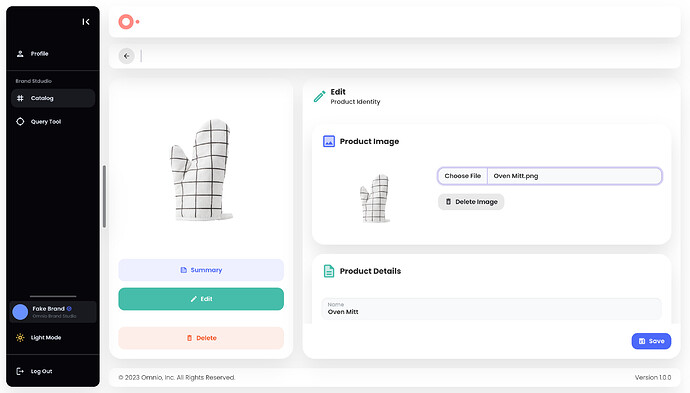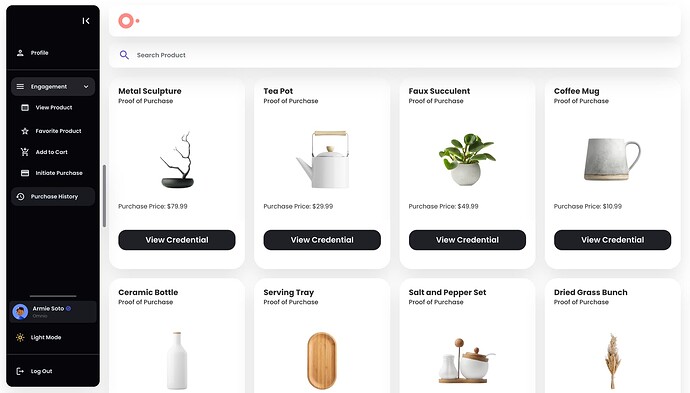Grant/Project Name: Omnio
Proposer(s): Armie Soto / Lucas Demaría
Grant Category: Application
ELI5 Project Summary:
We’re using ComposeDB to develop an open standard for Web3-native digital product identity, and with this standard in place — building a minimum viable product (MVP) to demonstrate the business value of self-custodial purchase data.
Project Description:
Currently, product data is siloed across fragmented e-commerce platforms.
To enable the interoperability of future retail applications, we’re using ComposeDB to develop an open standard for pairing real-world products with a Web3-native digital identity that is: authentic so that product data is cryptographically verifiable; composable so that brands, consumers, and retailers can contribute to a product’s overall reputation; and permissionless so that third parties have access to a globally-readable source of trusted product information.
Lastly, we envision a future in which self-custodial purchase data is widely adopted — empowering users to leverage their shopping history cross-platform.
Relevant Links:
Ceramic Ecosystem Value Proposition:
-
What is the problem statement this proposal hopes to solve for the Ceramic ecosystem?
We believe many ecosystem projects have been limited to specific use cases (e.g., social). -
How does your proposal offer a value proposition solving the above problem?
Our goal is to build infrastructure that will jump-start new, enterprise-grade retail applications on the Ceramic network. -
Why will this solution be a source of growth for the Ceramic ecosystem?
Besides easy onboarding for both Web2 brands and Web3 developers, we plan to be the first Web3-native project to incorporate GS1 standards — providing built-in trust guarantees and foundational data for over 200 million verified consumer products globally.
Funding Requested (USDC): [$50,000/65,000]
Milestones:
-
Milestone #1: System Architecture (100 Hours) - [$10,000]
First, we plan to work closely with the Ceramic engineering team to determine feasibility and scope.
- [Technical Requirements] - [60 Hours @ $100/Hour]
- Defining Ceramic data models, integrations (e.g., Lit Protocol), product attributes, etc.
- [UX Design] - [40 Hours @ $100/Hour]
- Conducting research, mapping user stories, wireframing, etc.
-
Milestone #2: Design/Prototyping (40 Hours) - [$4,000]
A user-friendly interface is critical for onboarding any Web2 brand that might be hesitant to adopt a Web3 solution, so we’re taking design inspiration from existing no-code development platforms (e.g., Canva).
- [UI Design] - [40 Hours @ $100/Hour]
- This includes using Figma to plan common design elements, input controls, layout, etc.
-
Milestone #3: Fullstack v.1 Development / Brand-Facing (200 Hours) - [$20,000]
Our brand-facing deliverables will include the following.
- [Brand Portal] - [160 Hours @ $100/Hour]
- A brand owner can sign in, create a product identity (either individually or by uploading product inventory in bulk), and manage verifiable credentials (VCs) issued to customers representing proof of purchase.
- [ComposeDB Data Modeling] - [40 Hours @ $100/Hour]
-
Milestone #4: Fullstack v.1 Development / Consumer-Facing (160 Hours) - [$16,000]
Our consumer-facing deliverables will include the following.
- [Consumer Dashboard] - [80 Hours @ $100/Hour]
- A consumer can sign in and view their self-custodial purchase data — product identity, time of purchase, amount spent, etc.
- [E-Commerce Site] - [40 Hours @ $100/Hour]
- A mock e-commerce site to simulate online purchases with product listings configured to read from published Ceramic data streams.
- [All Necessary Lit Protocol Integrations] - [40 Hours @ $100/Hour]
-
Milestone #5 (Optional): GS1 Integration (25 Hours) - [$15,000]
GS1 is the multi-national, not-for-profit industry standard for product identifiers. Web2 incumbents — Amazon Seller Central and Google Merchant Center, for example — require GS1 standards for all products listed on their platforms.We’ve been in contact with the GS1 innovation team over the past several months, and our goal is to integrate with their global registry.
- [Back-End Infrastructure and Connected APIs] - [$13,500]
- [Development] - [15 Hours @ $100/Hour]
I accept the 3Box Labs Grants Terms and Conditions: [Yes]
I understand that I will be required to provide additional KYC information to 3Box Labs to receive this grant: [Yes]


